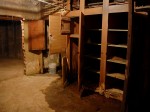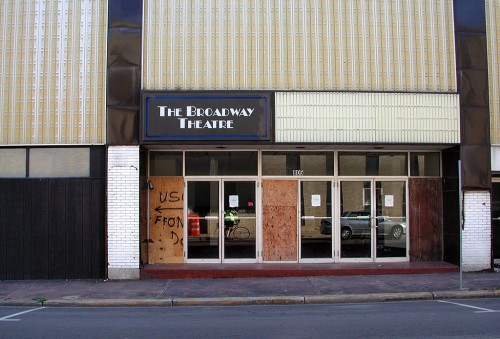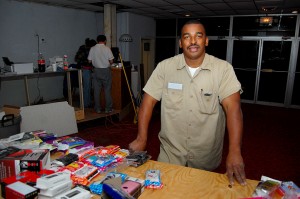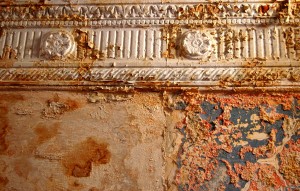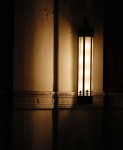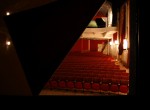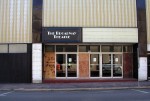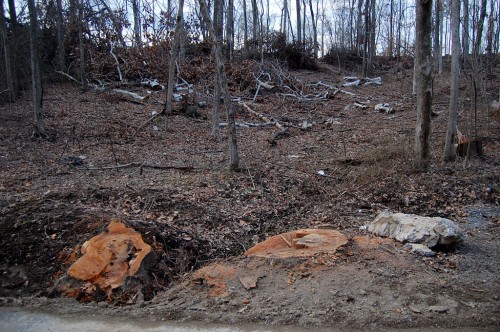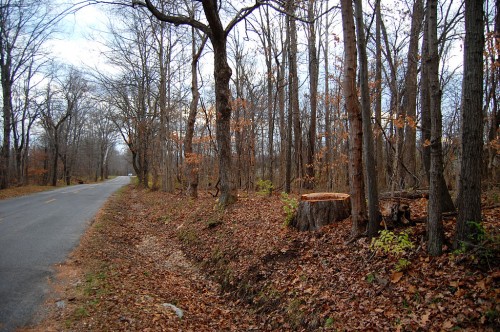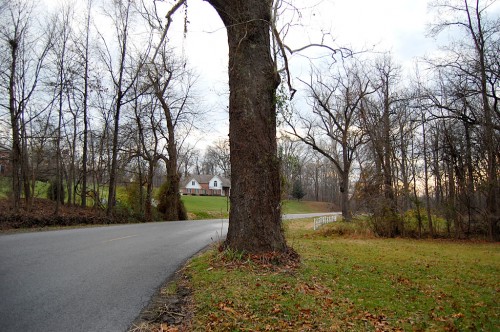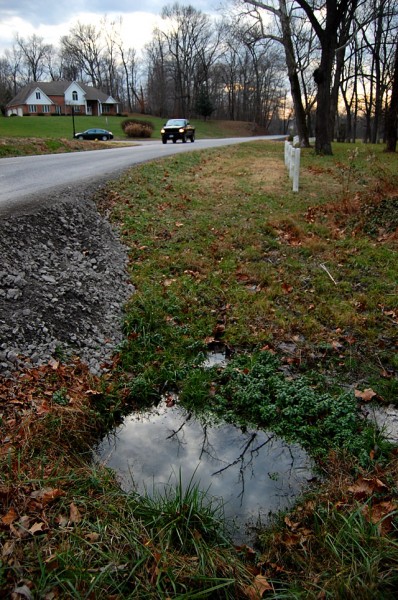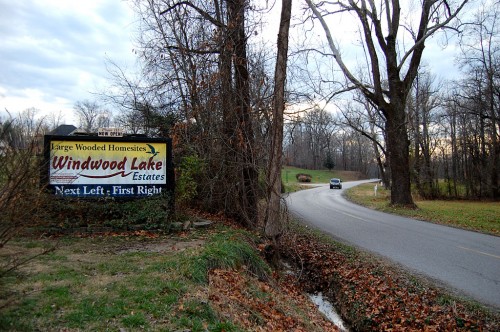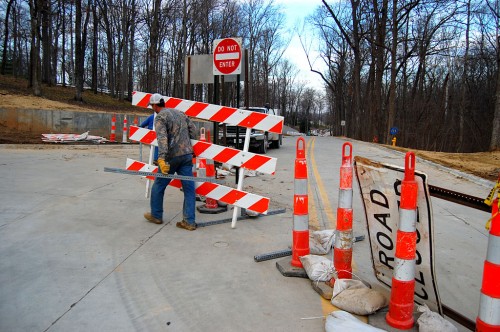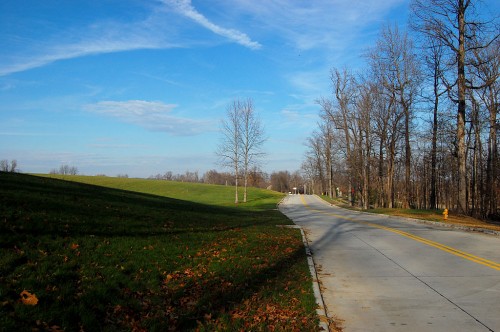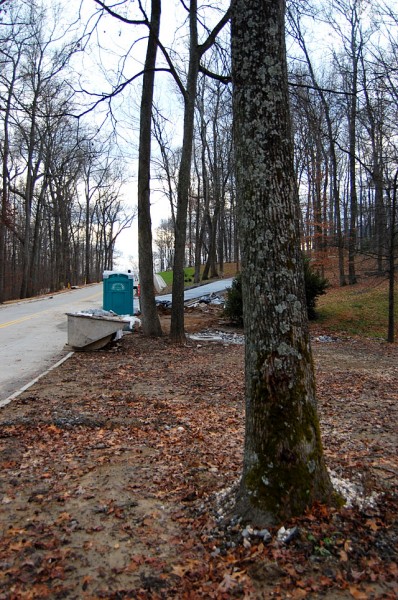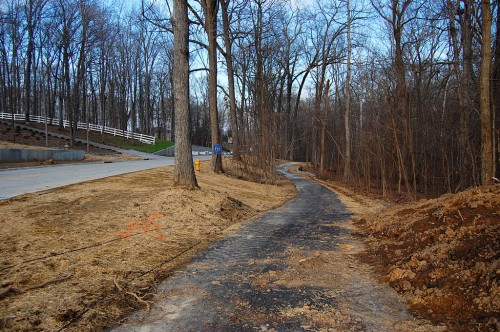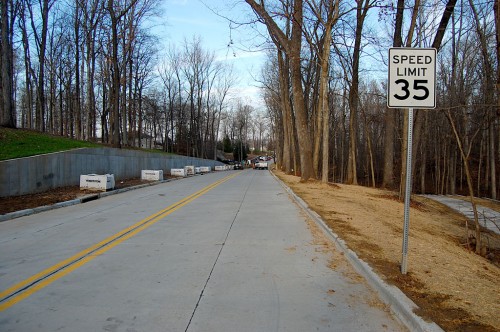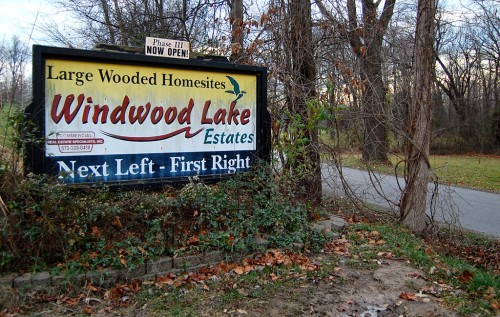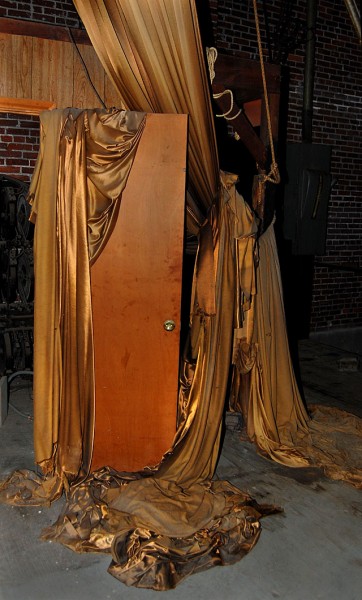 Yesterday you saw the public areas of Broadway Theater. Today we’ll go backstage and into the dressing rooms and basement areas. [Note: the photos are dated 12/16/2010. They should have been marked 2011. That’s what happens when you are working at 3 in the morning. Thanks to Gail Jackson Brown for pointing that out.]
Yesterday you saw the public areas of Broadway Theater. Today we’ll go backstage and into the dressing rooms and basement areas. [Note: the photos are dated 12/16/2010. They should have been marked 2011. That’s what happens when you are working at 3 in the morning. Thanks to Gail Jackson Brown for pointing that out.]
The Broadway was a full-blown theater with an orchestra pit and a stage where vaudeville actors performed.
Dad used to talk about pulling his little wagon loaded with sheet music for the woman who played the piano during the silent movies. Because we all know that Steinhoffs never embellish the truth, none of us ever challenged him. In 2007, I made my usual Sunday night call back to Cape. Mother said she had read the obit of the woman who used to play the piano in the silent movies. She was 101.
Dressing room walls are bare
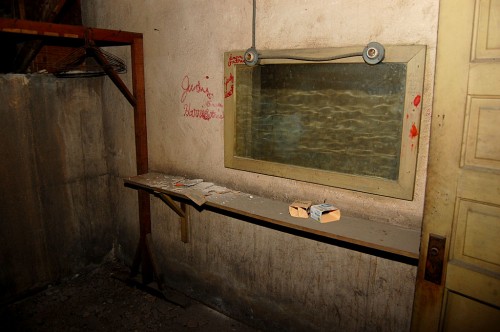 A lot of old theaters I’ve been in have autographs of actors scrawled all over the walls backstage and in the dressing rooms. The only marks I could see here looked like they might have done recently with lipstick.
A lot of old theaters I’ve been in have autographs of actors scrawled all over the walls backstage and in the dressing rooms. The only marks I could see here looked like they might have done recently with lipstick.
If these dressing rooms are typical, an actor’s life was far from glamorous. The rooms were tiny, with a bare bulb hanging from a cord from the ceiling and two bulbs over the mirror.
Rheostats controlled lighting
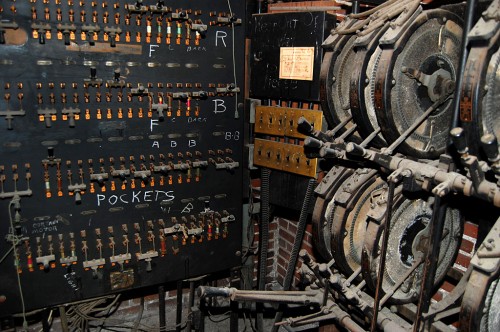 These knife switches and huge rheostats were used to control stage lighting.
These knife switches and huge rheostats were used to control stage lighting.
Frugal, for sure
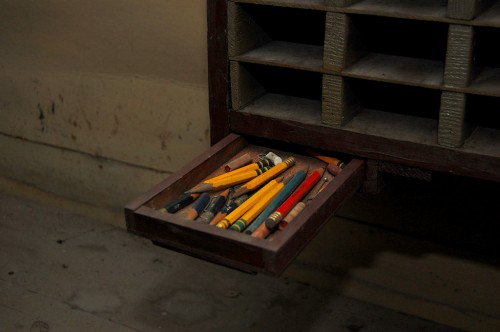 I think this is my favorite photo from Down Below. This drawer of pencils was pulled out over what I assume to have been a work bench. Some of the pencil stubs weren’t over an inch long. THERE’S a guy who didn’t waste anything.
I think this is my favorite photo from Down Below. This drawer of pencils was pulled out over what I assume to have been a work bench. Some of the pencil stubs weren’t over an inch long. THERE’S a guy who didn’t waste anything.
How to “paint” with light
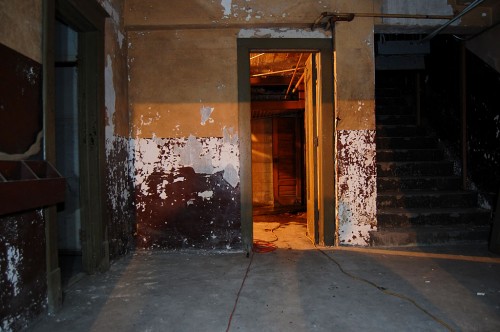 I’ll go to about any length to keep from using flash. I’m not very good at it and I don’t have the equipment to do it right. Sometimes, though, you have to shoot where there’s no available light available.
I’ll go to about any length to keep from using flash. I’m not very good at it and I don’t have the equipment to do it right. Sometimes, though, you have to shoot where there’s no available light available.
There was a little light in the room in front of us, and there was just enough light coming from a room behind us to ALMOST keep me from tripping over a pipe. I perched the camera up on a rickety tripod and set the shutter to stay open for 20 seconds. I had Friend Shari push the button, then I walked around the room shooting off my electronic flash in the dark corners of the room. That’s called “painting” with light.
When I was at Ohio University, about half a dozen of us lit up a building that was about two-thirds of a block long using this technique “just for fun.” (Photographers have a strange idea of fun.) It’s a lot easier in this day of digital photography when you can see your results immediately.
The key is to have enough light to bring out detail without having hot spots. I have one that’s better lit, but I’m holding it for the blooper tape. The shadow of the camera and tripod show up in the frame.
Photo gallery of backstage Broadway
Click on any photo to make it larger, then click on the left or right side to move through the gallery.














